5 Tips to Remember When Setting Up Your First Prototyping Lab

When setting up your first prototyping lab, it’s easy to feel overwhelmed before you even get started.
Don’t derail your progress before it begins. Instead, take a look at the 5 tips we’ve complied to help make your first prototyping lab a success.
Tip #1: Do Your Research
Don’t buy sight unseen. While this advice is commonly reserved for house hunters, we also caution against buying any CNC machines sight unseen. Over the years, we’ve seen some people look at a spec sheet, check the boxes, and buy a piece of equipment. With smaller equipment, you might be able to go this route. But with industrial machine purchases, you can really derail your productivity.
Sometimes, customers who only have experience with a certain type of control or interface approach different technologies with the same operational expectations. The fact is, if you’re unfamiliar with new equipment, you need to recognize that there may be a learning curve.
By failing to do the due diligence and set the proper expectations before purchasing the equipment, we’ve witnessed customers struggle to operate the machines.
In one particular instance, a customer ultimately ended up buying a different CNC milling machine after purchasing an Italian piece of equipment that, on the surface, seemed ideal. What was the problem you ask? The Italian machine had all sorts of problems, which were compounded by the fact that the manufacturer is based in Italy and their North America support is practically non-existent.
A site visit, in this case, would have demonstrated up front that there aren’t a lot of spare parts or technical support in North America which makes machine onboarding and operation a challenge.
Unfortunately, this client paid the price for not doing their initial due diligence as they had to sell their new machine to purchase an easier to use technology that they visited and learned about beforehand.
That’s why we caution anyone against buying sight unseen and strongly recommend that you invest in the time to go to the manufacturer and see the machine actually run—preferably on a sample of your own part or something comparable. It’s very important to do all the research up front and compare equipment.
Remember this, you’re not just buying a piece of equipment, you’re buying a piece of capital equipment, you’re investing in the ecosystem of that brand.
把它像购买iPhone或其他应用程序le product. The support offered by that brand is unmatched by their competitors. Between the Apple store and the supportive infrastructure — from apps to overall capabilities – consumers understand Apple as a partner they trust, who delivers products guaranteed by transparency and predictability.
Pick a partner who invites potential customers to come in, check out their machines in action, get familiar with the processes, and interact with the people behind the scenes. Accessibility is key to great customer service and overall success.
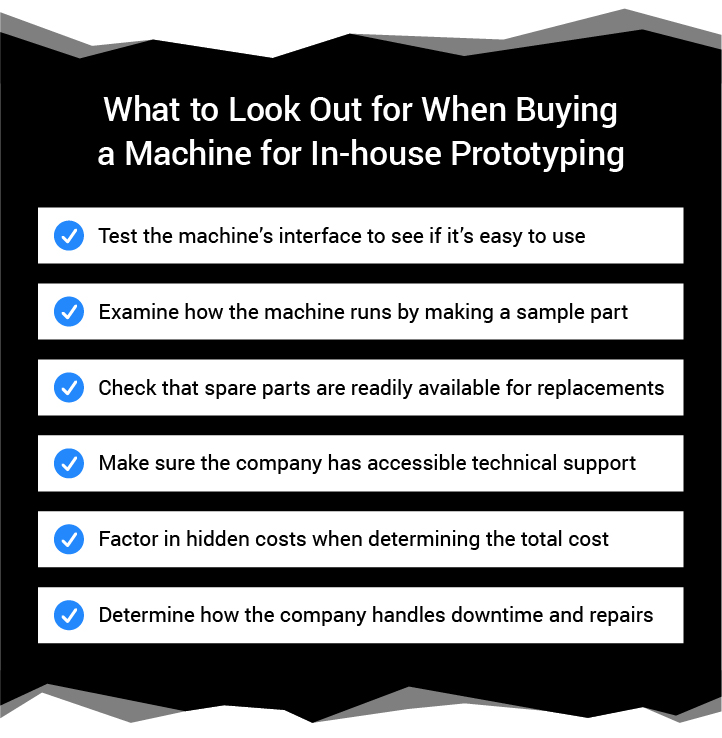
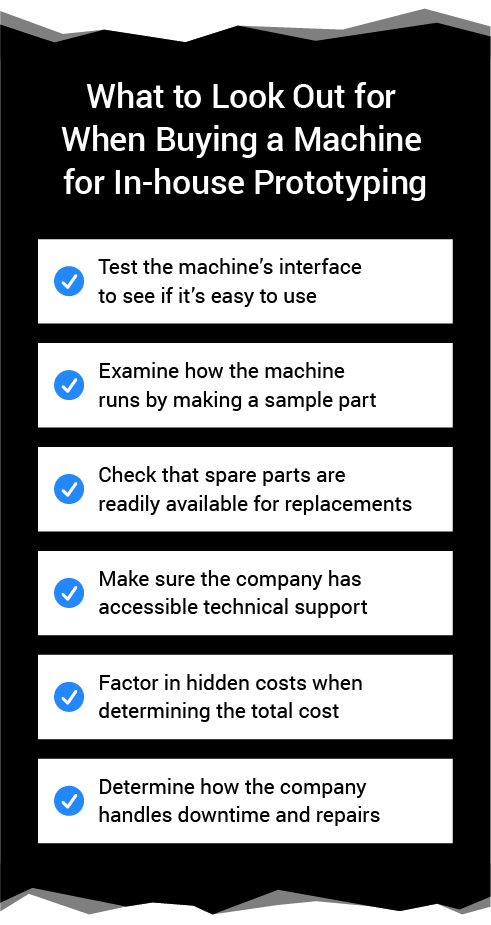
1a: Not Asking (yourself) the Right Questions
All too often the decision on which machine to purchase starts and ends with one thing… price. While it’s an important factor that will always be a consideration, placing a large emphasis on price can be irresponsible and financially detrimental to a business. Be sure to take into account the “hidden” costs of the new equipment that you’re researching.
For example:
- Do you need a reinforced concrete pad to support the extra machine weight?
- Does your facility have the proper electrical hookups in place?
- How much will it cost to dispose of the coolant from your new CNC mill (or does the machine use an evaporating spray mist coolant?)
- Do you provide training?
- And the biggest question of all – how does the company handle downtime and repairs?
即使是最好的最好的铣床经过nce downtime. What separates the good companies from the great is how quickly repairs are addressed. Ask the machine companies how repairs are handled and if their service team is internal or external contractors. Believe it or not, DATRON can diagnose and help solve over 90% of machine issues without having a repair technician on-site. Remember, less downtime equals more machining time and potential profits.

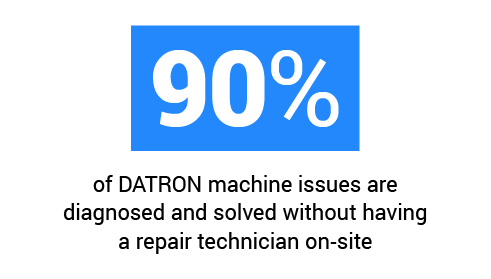
Tip #2: Leverage Small—and Quick—Wins
In order to improve adoption and become productive on new prototyping machines, new users need to have early success with creating a physical prototype, product, or part. Building this confidence early can enhance confidence and inspire employees to tackle harder, more complex projects.
Encourage machinists to approach the installation process by focusing on fundamentals — just the basics. Without them, you’ll be at a loss to handle more complex tasks and will likely struggle with maintenance and/or necessary adjustments.
Embrace the slower pace that comes with learning the basics and take this training as you would climb a ladder — one rung at a time.
Seize any opportunity to play with the machine and even create something personal on it. This is basically more training in disguise, providing you the opportunity to take pride in creating a particular piece, while putting you in the mindset of designing around manufacturability in the future, potentially with different materials or tools.
Tip #3: Keep it Simple
When creating training materials for new users on new prototyping equipment always favor real, conversational, human language. Sometimes, more academic language can be daunting for new employees or other, non-engineer team members. This can result in new users feeling alienated from the material before they’ve even begun exploring it.
Avoid jargon in favor of inclusive language and promote thinking in simpler terms. Skip the “lawyer speak” altogether.
In other words, don’t use vocabulary that only a certain subset of your team will understand, which can unnecessarily complicate simple concepts for everyone else.
For example, CNC operation training is heavily technical and very dry. This can be made worse if the training is delivered by an experienced user who knows the information inside and out. Left unchecked, these trainers can leave new trainees feeling like they are drinking from a firehose.
Tip #4: Create a Quick Start Guide
Streamlining the start-up process involving how to operate a DATRON machine will support success in your prototyping lab. This requires setting expectations, establishing rules of engagement, and opening lines of communication as part of a company culture where people feel empowered and encouraged to ask questions, confident that they know how to get answers.
A Quick Start Guide can prove invaluable before jumping onto the machine and getting comfortable with it — whether for the first time or after time spent away from it. This guide should also include safety recommendations and specific regulations for your space.
Although this step represents an investment in time to create the guide, the result translates as even more time and money saved. Before you go creating one, check with prospective machine suppliers. They might have one ready to go.
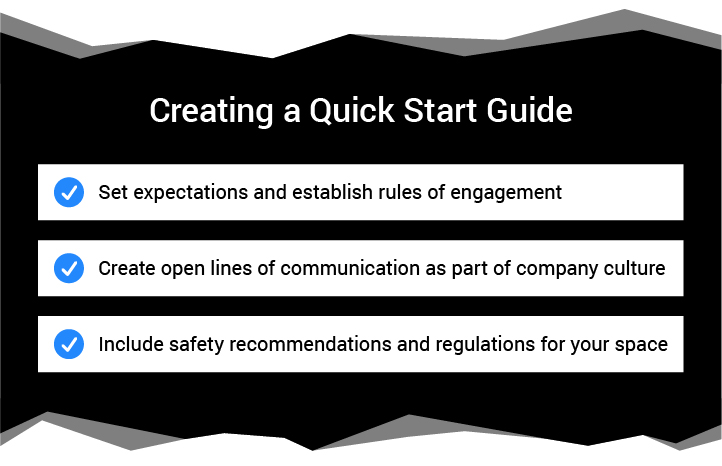
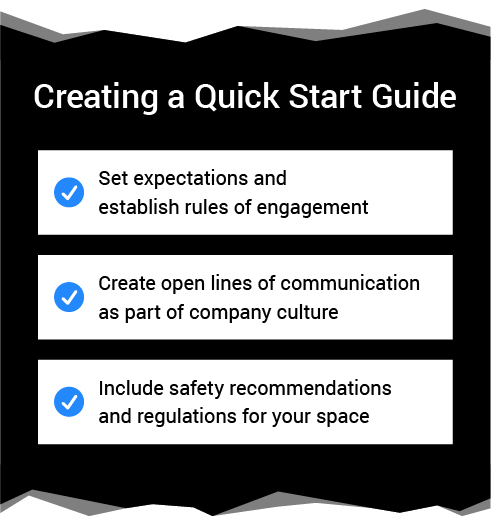
Tip #5: Map Out Your Shop Floor
Whatever you believe your prototyping square footage will be, make sure to budget plenty of additional space for backend infrastructure, material, and equipment storage space. Also, make sure you consider what it looks like to actually work inside that space.
Keeping your workflow in mind should help you plan to adequately accommodate the machine and the space necessary to operate it.
The last thing that you want is to complete an installation and be concerned that your machine is shoehorned in among a dozen other pieces of equipment. Make sure you leave enough room to easily open doors and panels, adjust the control terminal, and walk around the machine. You don’t want to sacrifice your ability to easily maintain or operate a machine just to fit it into your facility. An example we’ve seen in the past is having machines packed so tightly into a room, that the movement of the control terminal would inadvertently trigger the emergency stop button on another machine. Ask yourself: is that something that you want to contend with while you’re already focused on bringing a product to market?
Ultimately, there are dozens or capable CNC milling machines that you could look at for your rapid prototyping lab. The key to making your new endeavor a success, and to reduce your stress, is to remove yourself from the “buy now” mindset and think longer term. Think of the machine as an iceberg. The cost may be what you see on the surface, but there’s a large mass below the surface. Ask the right questions and do your due diligence, and you’ll avoid any titanic consequences.
Save yourself from any trial and error when setting up your first prototyping lab by relying on our tips and experience to guide your steps forward.
If you have any additional questions about how to set up your first prototyping lab successfully, we invite you tocontact us. The DATRON ethos inspires us to educate anyone interested in learning more in order to elevate our industry to greater heights.
About DATRON Dynamics
DATRON Dynamics, Inc. is the premier provider of DATRON CNC milling machines, tooling, service, and support in North America. With an East Coast headquarters located in Milford, NH and a West Coast office in Livermore, California, DATRON Dynamics combines the benefits of DATRON’s German-Engineered CNC technology with first class service and support across the United States, Canada, and Mexico.
About the Author
Discover How You Can Optimize Your Entire Workflow Today
DATRON machines dramatically reduce practically every aspect of your machining workflow. Download our FREE Workflow Optimization Map and learn how today.
